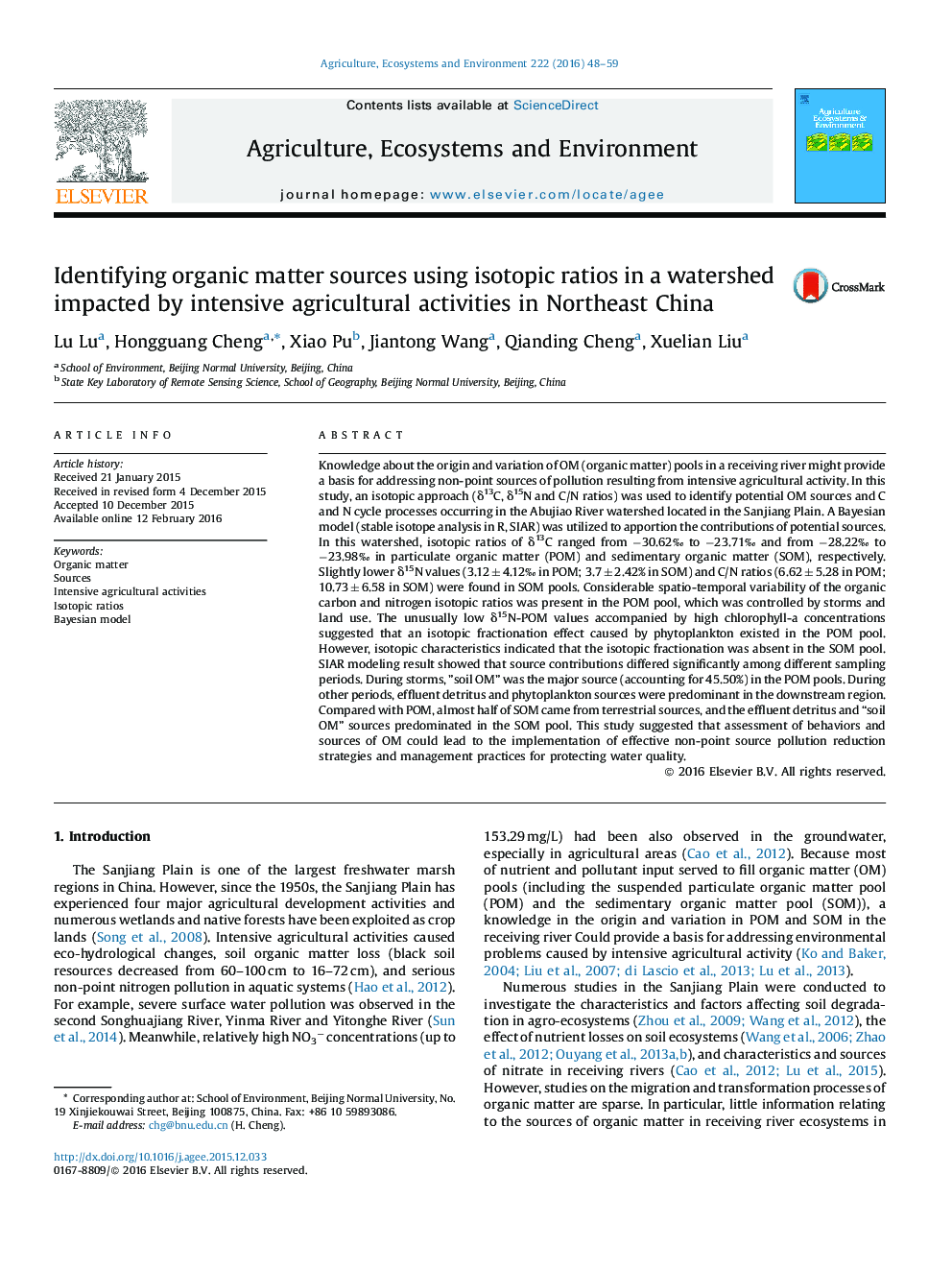| کد مقاله | کد نشریه | سال انتشار | مقاله انگلیسی | نسخه تمام متن |
|---|---|---|---|---|
| 2413578 | 1552030 | 2016 | 12 صفحه PDF | دانلود رایگان |
• The isotopic characteristics of potential OM sources were identified.
• Isotopic fractionation caused by phytoplankton resulted in the depleted isotopic values.
• Source of POM has a close relationship with the soil erosion in storm events.
• Effluent detritus and phytoplankton contributed the most POM in the river.
• Most of SOM came from terrestrial (effluent detritus and soil OM).
Knowledge about the origin and variation of OM (organic matter) pools in a receiving river might provide a basis for addressing non-point sources of pollution resulting from intensive agricultural activity. In this study, an isotopic approach (δ13C, δ15N and C/N ratios) was used to identify potential OM sources and C and N cycle processes occurring in the Abujiao River watershed located in the Sanjiang Plain. A Bayesian model (stable isotope analysis in R, SIAR) was utilized to apportion the contributions of potential sources. In this watershed, isotopic ratios of δ13C ranged from −30.62‰ to −23.71‰ and from −28.22‰ to −23.98‰ in particulate organic matter (POM) and sedimentary organic matter (SOM), respectively. Slightly lower δ15N values (3.12 ± 4.12‰ in POM; 3.7 ± 2.42% in SOM) and C/N ratios (6.62 ± 5.28 in POM; 10.73 ± 6.58 in SOM) were found in SOM pools. Considerable spatio-temporal variability of the organic carbon and nitrogen isotopic ratios was present in the POM pool, which was controlled by storms and land use. The unusually low δ15N-POM values accompanied by high chlorophyll-a concentrations suggested that an isotopic fractionation effect caused by phytoplankton existed in the POM pool. However, isotopic characteristics indicated that the isotopic fractionation was absent in the SOM pool. SIAR modeling result showed that source contributions differed significantly among different sampling periods. During storms, ”soil OM” was the major source (accounting for 45.50%) in the POM pools. During other periods, effluent detritus and phytoplankton sources were predominant in the downstream region. Compared with POM, almost half of SOM came from terrestrial sources, and the effluent detritus and “soil OM” sources predominated in the SOM pool. This study suggested that assessment of behaviors and sources of OM could lead to the implementation of effective non-point source pollution reduction strategies and management practices for protecting water quality.
Journal: Agriculture, Ecosystems & Environment - Volume 222, 15 April 2016, Pages 48–59
